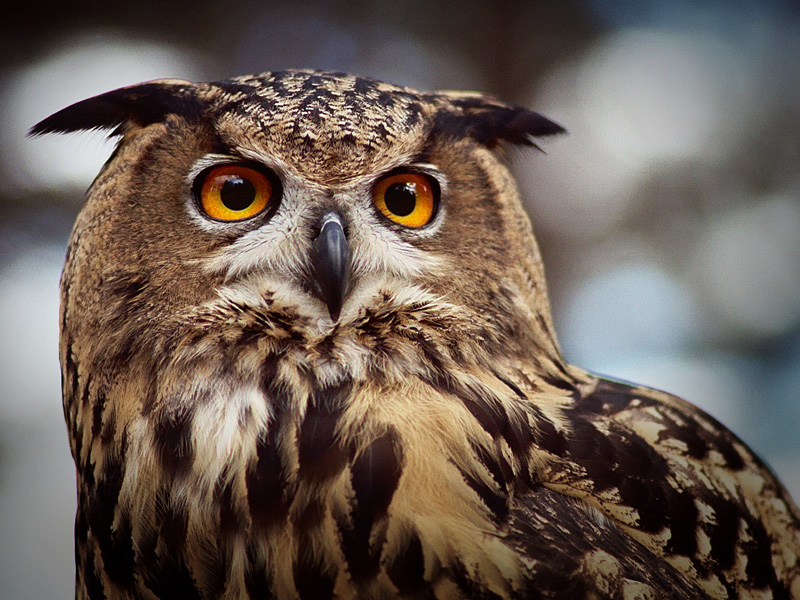 The Great Horned Owl is efficiently designed for the purpose of detecting and capturing prey. Not a single feature is wasted on anything other than that purpose. This particular owl was on display at the Nature Arboretum near Flagstaff, Arizona, and was being handled by an expert in large carniverous birds.
The Great Horned Owl is efficiently designed for the purpose of detecting and capturing prey. Not a single feature is wasted on anything other than that purpose. This particular owl was on display at the Nature Arboretum near Flagstaff, Arizona, and was being handled by an expert in large carniverous birds.The eyes of the Great Horned Owl are large in relation to the size of its head. If a human’s eyes were of a similar size, they would be as large as softballs. The owl can see up to 100 times better in low light than humans. The forward-facing eyes also provide increased depth perception. The slightly concave disc of feathers that make up the bulk of the owl’s face funnels sounds into the bird’s ear canals, located just behind the eyes.
The ear openings are asymmetrically placed on the owl’s head, giving the bird a sense of three-dimensional hearing. When potential prey is spotted, the owl will bob his head up and down and from side to side, taking in sound from all directions as he triangulates the precise location of his next meal.
Once the owl has sized up his prey, he will swoop down in silence. Each feather on the owl’s wings have softened serrated edges and a fuzzy upper surface, muffling sound as the feathers move through the air.
An owl’s talons are also adapted for successful hunting. The outer toe on each foot can swivel back and forth, giving the owl the option to have two toes in the front and two toes in the back, providing a strong, even grip on its squirming prey.
Very clean, very efficient.
Click on picture to enlarge. Photograph © 2006 James Jordan.




5 comments:
Gorgeous Photo.
Take Care
Michael
Really an amazing bird! And a great picture!
beautiful... amazing eyes
Great shot. And a great take on the topic of orange. :-)
Nice orange image!
Post a Comment